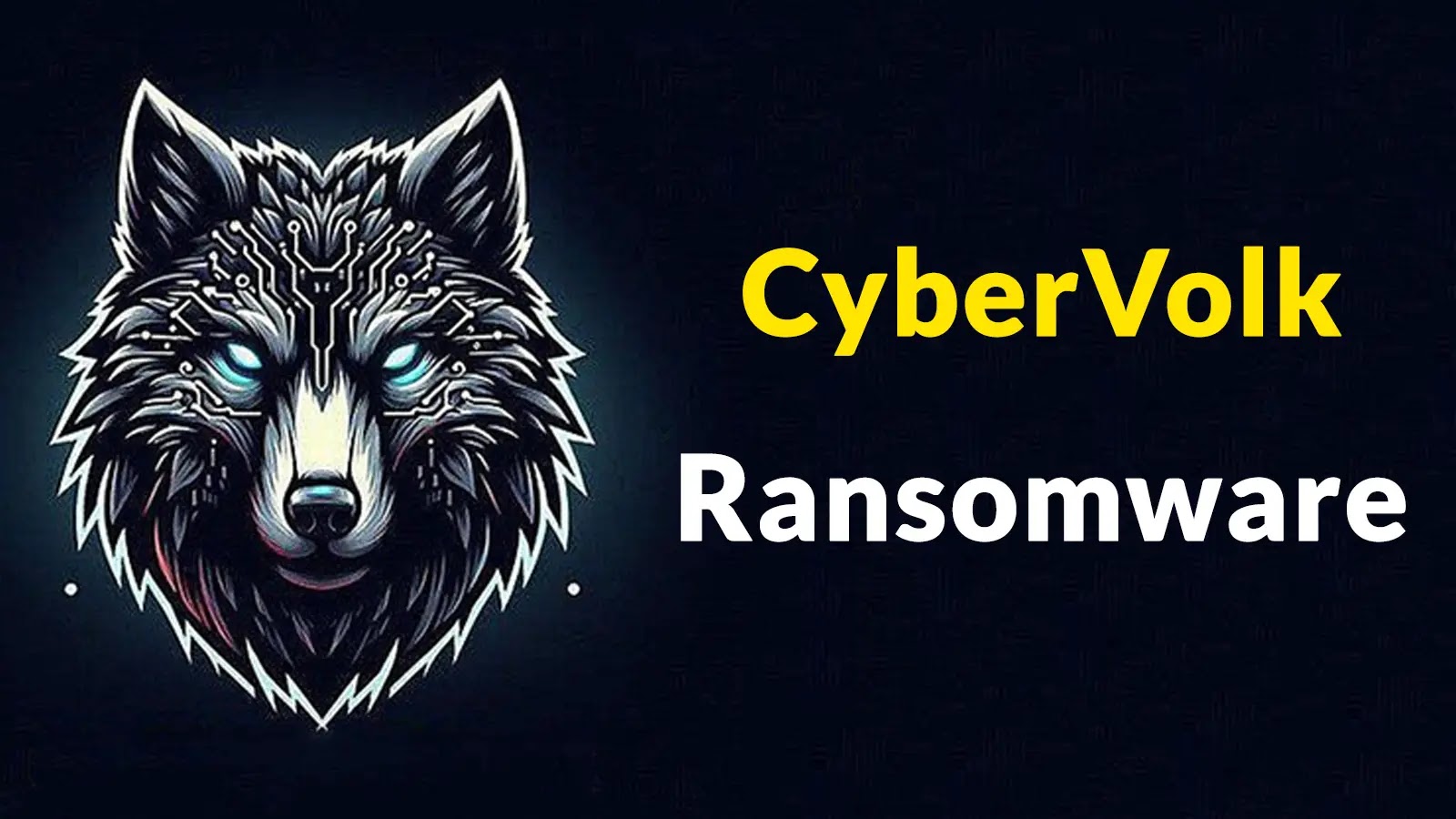
CyberVolk Ransomware Attacking Windows System in Critical Infrastructure and Scientific Institutions
The digital battleground is constantly shifting, and a formidable new adversary has emerged: CyberVolk ransomware. First observed in May 2024, this sophisticated strain has rapidly escalated into a significant threat, squarely targeting critical infrastructure and scientific institutions within nations perceived as hostile to Russian interests. The implications of such attacks are severe, ranging from operational paralysis in essential services to the compromise of sensitive research data.
Understanding the CyberVolk Threat Landscape
CyberVolk ransomware is not a typical, opportunistic cybercriminal operation. Its emergence points to a calculated campaign with clear geopolitical motivations. Initial intelligence indicates a focused approach on governmental agencies and critical infrastructure in countries like Japan, France, and the United Kingdom. This strategic targeting highlights an intent to inflict maximal disruption and exert influence through cyber warfare.
The operational impact has been immediate and severe. Scientific institutions, often custodians of invaluable research and development, have faced significant operational disruptions. Likewise, public services, upon which civilian life depends, have experienced tangible setbacks, underscoring the broad societal consequences of such attacks.
Technical Deep Dive: CyberVolk’s Encryption Mechanism
One of CyberVolk’s distinguishing features is its advanced encryption methodology. The malware employs a dual-layer symmetric encryption process, significantly complicating decryption efforts. This multi-layered approach means that even if one encryption key is compromised or discovered, an additional layer of protection remains, making data recovery exceptionally challenging without the attacker’s cooperation or a highly resilient backup strategy.
While specific algorithms employed (e.g., AES-256, ChaCha20) have not been explicitly detailed in immediate public reports, the use of symmetric encryption typically implies faster encryption and decryption speeds, allowing the ransomware to quickly lock down large volumes of data across compromised networks. Organizations must understand that the complexity of this encryption scheme necessitates robust defense-in-depth strategies and impeccable data hygiene.
Targeted Systems and Vulnerabilities Exploited
The current focus of CyberVolk attacks has been on Windows systems. This is hardly surprising, given the pervasive use of Microsoft Windows operating systems across governmental, critical infrastructure, and scientific sectors globally. Ransomware operators frequently exploit known vulnerabilities in Windows, particularly those related to remote desktop protocols (RDP), Server Message Block (SMB), or unpatched software that provides initial access.
While no specific CVEs have been directly attributed to CyberVolk’s initial access vectors at the time of this report, organizations should remain vigilant regarding commonly exploited vulnerabilities. For instance, an unpatched vulnerability like CVE-2017-0144 (EternalBlue), though older, could still be a potential entry point for less mature systems, or newer high-severity RDP vulnerabilities. Proactive patching and robust vulnerability management are paramount.
Remediation Actions and Proactive Defenses
Mitigating the threat of CyberVolk ransomware, or any sophisticated ransomware, requires a multifaceted approach encompassing prevention, detection, and response. Organizations in critical infrastructure and scientific research must prioritize these actions immediately.
- Patch Management: Implement a rigorous and timely patch management strategy for all operating systems, applications, and network devices, especially those exposed to the internet. Prioritize patches for critical and high-severity vulnerabilities.
- Strong Authentication: Enforce multi-factor authentication (MFA) across all services, particularly for remote access, VPNs, and privileged accounts.
- Network Segmentation: Segment networks to limit lateral movement. Critical systems should be isolated from less sensitive parts of the network, reducing the blast radius of any successful intrusion.
- Principle of Least Privilege: Grant users and applications only the minimum necessary permissions to perform their functions.
- Regular Backups: Implement a 3-2-1 backup strategy: at least three copies of your data, stored on two different media types, with one copy offsite and offline. Test backup restoration processes regularly.
- Endpoint Detection and Response (EDR): Deploy EDR solutions to monitor endpoints for suspicious activity, detect anomalies, and respond to threats in real-time.
- Security Awareness Training: Educate employees about phishing, social engineering tactics, and the importance of reporting suspicious emails or activities.
- Incident Response Plan: Develop, test, and regularly update a comprehensive incident response plan specifically for ransomware attacks. This plan should include communication protocols, roles and responsibilities, and decision-making frameworks.
- Threat Intelligence: Subscribe to and act upon timely threat intelligence feeds to stay abreast of new threats, indicators of compromise (IoCs), and attack methodologies.
Key Tools for Detection and Mitigation
| Tool Name | Purpose | Link |
|---|---|---|
| Nessus (Tenable) | Vulnerability scanning and management | https://www.tenable.com/products/nessus |
| Microsoft Defender for Endpoint | Endpoint Detection and Response (EDR) | https://www.microsoft.com/en-us/security/business/microsoft-365-defender/microsoft-defender-for-endpoint |
| Cofense PhishMe | Phishing simulation and security awareness training | https://cofense.com/solutions/phishme/ |
| Veeam Backup & Replication | Data backup and recovery solution | https://www.veeam.com/backup-replication-vpower-overview.html |
| Wireshark | Network protocol analysis for forensic investigation | https://www.wireshark.org/ |
Conclusion
The emergence of CyberVolk ransomware underscores the persistent and evolving threat landscape facing critical infrastructure and scientific institutions. Its strategic targeting and sophisticated dual-layer encryption pose a significant challenge. Proactive defense mechanisms, including robust patching, strong authentication, network segmentation, and regular backups, are not merely best practices; they are essential survival strategies in an era where cyber warfare is a tangible reality. Organizations must move beyond reactive measures and embrace a security-first posture to protect their vital assets and preserve operational continuity.





